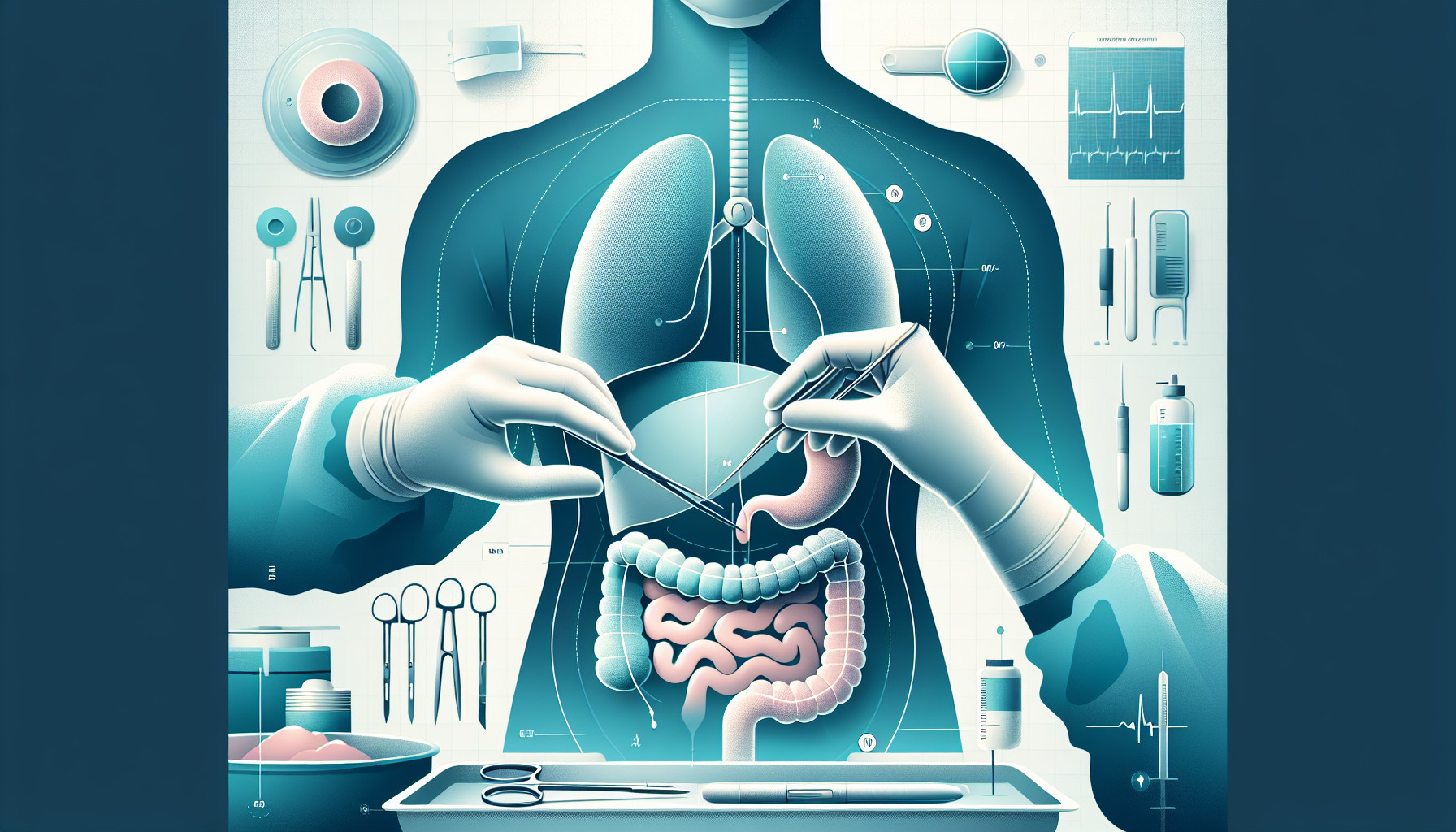Our Summary
This research paper is about a new method to fix a specific kind of hernia that often comes back even after surgery. This hernia is called a paraesophageal hernia and it happens when part of the stomach pushes through the diaphragm.
In this study, the researchers used a robot to perform the surgery. They took a piece of tissue from the patient’s abdomen, complete with its own blood supply, and used it to fix the hole in the diaphragm. This piece of tissue is stronger and more flexible than other materials typically used during this kind of surgery.
They tested this new technique on two patients and it was successful. This new method could be a promising way to treat people with large paraesophageal hernias that are difficult to fix.
FAQs
- What is the new technique described for hiatal hernia repair in the study?
- How successful was the use of vascularized fascia from the posterior rectus sheath during robotic hiatal hernia repair?
- What is the benefit of using autologous vascularized fascia and peritoneum in hiatal hernia repairs?
Doctor’s Tip
One helpful tip a doctor might tell a patient about hiatal hernia repair is to follow any post-operative instructions carefully, including avoiding heavy lifting and strenuous activities for a certain period of time to allow the repaired area to heal properly. It is also important to maintain a healthy diet and avoid foods that can exacerbate symptoms, such as spicy or acidic foods. Regular follow-up appointments with your doctor are important to monitor your progress and ensure the success of the repair.
Suitable For
Patients who are typically recommended for hiatal hernia repair include those with symptomatic hiatal hernias, recurrent hiatal hernias, large paraesophageal hernias, and those who are experiencing complications such as gastroesophageal reflux disease (GERD), difficulty swallowing, chest pain, or respiratory issues. In cases of complex or recurrent paraesophageal hernias, surgical repair may be necessary to prevent complications such as strangulation or obstruction of the stomach or other organs. This study describes a new technique using vascularized fascia harvested from the posterior rectus sheath for hiatal hernia repair in patients with large complex diaphragmatic defects.
Timeline
Before hiatal hernia repair:
- Patient may experience symptoms such as heartburn, chest pain, difficulty swallowing, and regurgitation of food.
- Patient may undergo diagnostic tests such as an upper endoscopy, barium swallow, or pH monitoring to confirm the presence of a hiatal hernia.
- Patient may be advised to make lifestyle changes such as avoiding large meals, losing weight, and avoiding trigger foods to manage symptoms.
After hiatal hernia repair:
- Patient undergoes robotic hiatal hernia repair surgery, during which vascularized fascia harvested from the posterior rectus sheath with peritoneum is used to repair the diaphragmatic defect.
- Successful harvesting and onlay of the right posterior rectus sheath is achieved robotically, followed by cruroplasty of the hiatal defect.
- The technique restores the dynamic hiatal complex with the tensile strength of autologous vascularized fascia and peritoneum, reducing the risk of hernia recurrence.
- Patient is monitored post-operatively for any complications and is advised on post-operative care instructions to ensure proper healing and recovery.
What to Ask Your Doctor
- What is the success rate of hiatal hernia repair using vascularized fascia harvested from the posterior rectus sheath with peritoneum?
- What are the potential risks and complications associated with this specific technique?
- How does this technique compare to other surgical methods for hiatal hernia repair in terms of outcomes and recovery time?
- What is the expected recovery time after undergoing this type of hiatal hernia repair surgery?
- Will I need to follow any specific post-operative care instructions or restrictions after the surgery?
- How long can I expect the results of the hiatal hernia repair to last?
- Are there any dietary or lifestyle changes I should make following the surgery to prevent recurrence of the hernia?
- Are there any specific symptoms or warning signs I should watch out for after the surgery that may indicate a complication?
- How often will I need to follow up with you after the surgery for monitoring and evaluation of the repair?
- Are there any alternative treatment options for hiatal hernia repair that I should consider?
Reference
Authors: Vigneswaran Y, Bryan AF, Ruhle B, Gottlieb LJ, Alverdy J. Journal: J Gastrointest Surg. 2022 Jan;26(1):268-274. doi: 10.1007/s11605-021-05134-7. Epub 2021 Sep 10. PMID: 34506032
